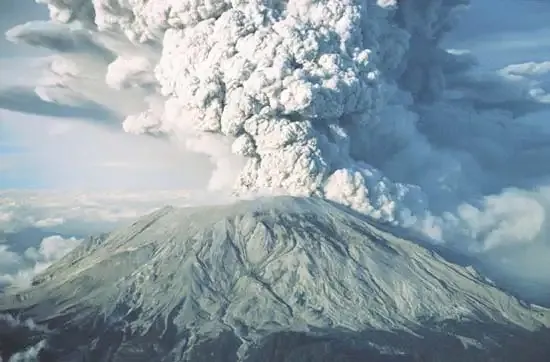35th Anniversary of Mount Saint Helens Eruption
The 35th anniversary of the Mount St. Helens eruption marks a significant moment in geological history, commemorating the catastrophic event that occurred on May 18, 1980. The eruption dramatically reshaped the landscape, reducing the elevation of the mountain and obliterating the surrounding area with ash and pyroclastic flows. This anniversary serves as a reminder of nature's power and the importance of volcanic monitoring and research. It also honors the resilience of the affected communities and advances in volcanic science since the event.

On May 18, 1980, the world witnessed a catastrophic event that would change the landscape of the Pacific Northwest forever. The eruption of Mount Saint Helens was a significant geological event, marking a pivotal moment in the study of volcanology. As we commemorate the 35th anniversary of this monumental eruption, it is essential to reflect on the eruption's impact, the scientific advancements that followed, and the lessons learned from this natural disaster.
The Eruption: A Brief Overview
The eruption of Mount Saint Helens was preceded by two months of intense seismic activity, characterized by a series of small earthquakes. On the morning of May 18, a massive explosion occurred, resulting in a lateral blast that devastated an area of over 230 square miles. The ash plume reached an elevation of 80,000 feet and spread across several states, affecting air travel and air quality for countless residents.
Impact on the Environment
The environmental impact of the Mount Saint Helens eruption was profound. The blast flattened forests, destroyed wildlife habitats, and altered river systems. The landscape was transformed into a barren wasteland, and the effects on the local ecosystem were devastating.
In the years following the eruption, scientists studied the recovery of the environment, providing invaluable insights into ecological succession. The resilience of nature was evident as new plant and animal species began to repopulate the area. This research has become a cornerstone of ecological studies related to disaster recovery.
Scientific Advancements Post-Eruption
The Mount Saint Helens eruption catalyzed significant advancements in volcanology and disaster preparedness. Researchers utilized real-time data to analyze the eruption's behavior, leading to improved monitoring techniques. The United States Geological Survey (USGS) established a comprehensive monitoring system that includes seismographs, gas emissions, and thermal imaging.
These advancements have not only improved our understanding of volcanic eruptions but have also enhanced public safety measures. Communities near active volcanoes are now better equipped to respond to potential eruptions, reducing the risk to human life.
Lessons Learned from the Eruption
The eruption taught valuable lessons about the importance of preparedness and public awareness. Effective communication is crucial during emergencies, and the response to the Mount Saint Helens eruption highlighted the need for clear information dissemination.
Government agencies and scientists now emphasize the importance of community education in disaster-prone areas. Residents are encouraged to create emergency plans, understand warning systems, and stay informed about the risks associated with living near active volcanoes.
Commemoration of the 35th Anniversary
This year marks the 35th anniversary of the Mount Saint Helens eruption, and various events and activities are planned to honor the memory of those affected by the disaster. Educational programs, guided tours, and remembrance ceremonies will reflect on the eruption's impact and the ongoing recovery efforts.
Local communities are also encouraged to participate in discussions about volcanic hazards and disaster preparedness. Engaging in these conversations ensures that the lessons learned from Mount Saint Helens continue to be shared and that future generations remain informed.
Table: Key Facts about the 35th Anniversary of Mount Saint Helens Eruption
| Fact | Details |
|---|---|
| Date of Eruption | May 18, 1980 |
| Area Affected | 230 square miles |
| Height of Ash Plume | 80,000 feet |
| Initial Casualties | 57 people |
| Ongoing Research | Ecological recovery and volcanic monitoring |
Conclusion: A Lasting Legacy
The 35th anniversary of the Mount Saint Helens eruption serves as a reminder of nature's power and the importance of scientific research in understanding and mitigating natural disasters. The lessons learned from this event continue to shape policies and practices related to volcanic activity.
As we reflect on the past, it is crucial to remain vigilant and prepared for future geological events. By honoring the legacy of Mount Saint Helens, we can foster a culture of awareness and resilience, ensuring that we are better equipped to face the challenges that lie ahead.












